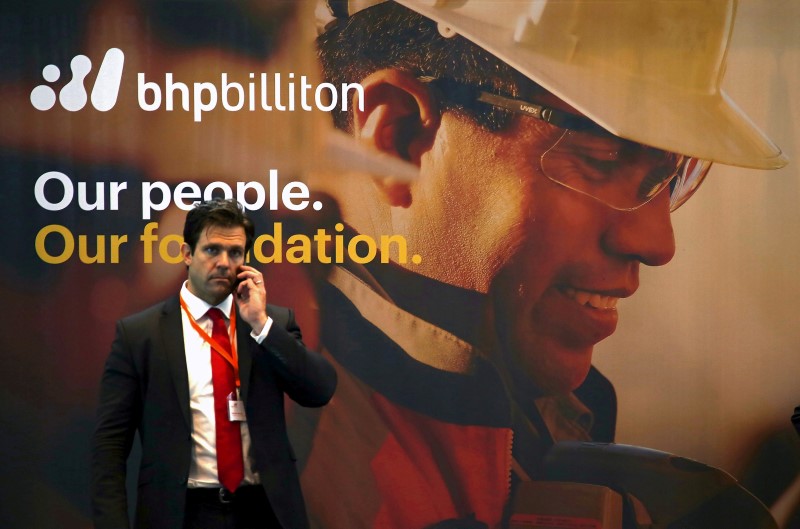By James Regan and Barbara Lewis
SYDNEY/LONDON (Reuters) - BHP Billiton (AX:BHP) (L:BLT) and Anglo American (L:AAL) have reported setbacks in their iron ore production, but analysts said the contraction was nowhere near enough to dent the massive global supply glut that has driven prices to record lows.
Overnight on Tuesday, BHP Billiton narrowly missed its iron ore output target in the financial year just ended following the Samarco disaster in Brazil, while Anglo American on Wednesday reduced its full-year production forecast in Brazil.
Anglo American's shares were down 7.1 percent at 755.6 pence by 1249 London time, when BHP's shares in London were down 2.6 percent at 924.1 pence, in line with the FTSE-350 mining sector index. (FTNMX1770)
Analysts said the steeper fall in the shares of Anglo American was not directly related to the heavily indebted company's production results and instead blamed profit-taking on the recovery in share prices from the lows hit following the UK's vote to leave the European Union.
Output at BHP's Western Australian iron ore mines rose by 5 percent quarter-on-quarter to 64.6 million tonnes, pushing the annual total to 257 million tonnes, short of its last forecast of 260 million. BHP's share of quarterly output was 55.6 million tonnes.
For the year ending on June 30, 2017, BHP still expects its Australian iron ore output to rise by up to 7 percent, while copper will grow by 5 percent and metallurgical coal by 3 percent.
BHP, which has completed a massive expansion of its iron ore business to supply the Chinese market, said the planned growth would come from deploying latent capacity at its mines as part of a broader strategy to boost volumes across core commodities.
A big hit to production came from the shutdown of BHP and Vale's (SA:VALE5) jointly owned Samarco operation following a burst tailings dam in November last year, billed as the worst environmental disaster in Brazil's history.
Samarco is not expected to restart operations this calendar year.
For BHP, iron ore accounts for more than 60 percent of core profits.
Meanwhile Anglo, which is trying to shift the focus to higher value assets and drive down debt, cut its forecast for Minas Rio iron ore production in Brazil in 2016 to 15-17 million tonnes from a previous forecast of 15-18 million tonnes.
Earlier this week Rio Tinto (AX:RIO) (L:RIO) said it was on track to meet full-year iron ore guidance.
Fortescue Metals Group (AX:FMG), the world's fourth-biggest iron ore miner, behind Vale, Rio Tinto and BHP, this month reported production for the year ended last month of 169.4 million tonnes, above its April guidance for 165 million tonnes.
Iron ore <.IO62-CNI=SI> fell to its weakest on record late last year. It has recovered by around 50 percent, but analysts say the market will remain oversupplied for the foreseeable future.
ANGLO CUTS COPPER FORECAST
Anglo also lowered its expectations for copper following severe weather at Los Bronces in Chile. Full-year forecasts are now 570,000 to 600,000 tonnes for 2016 from 600,000 to 630,000 tonnes and 570,000 to 600,000 tonnes for 2017 (previously 590,000 to 620,000 tonnes).
With other production outlooks unchanged, analysts said the latest batch of figures were mixed.
Some saw a positive outlook for diamond revenue. Anglo's diamond production decreased 19 percent, reflecting a decision to curb output in response to trading conditions late last year.

"We also continue to demonstrate discipline in our key markets, particularly diamonds and platinum, in line with our focus on higher margin and lower cost assets," Chief Executive Mark Cutifani said, but added the firm maintained "a cautious outlook".